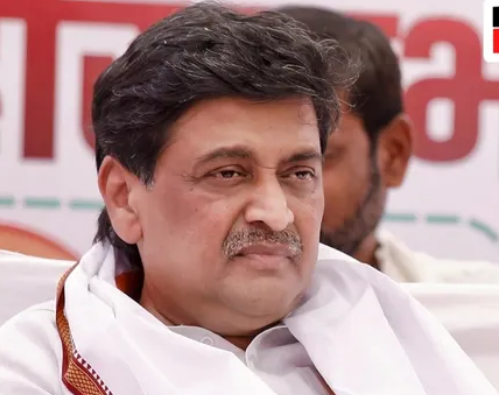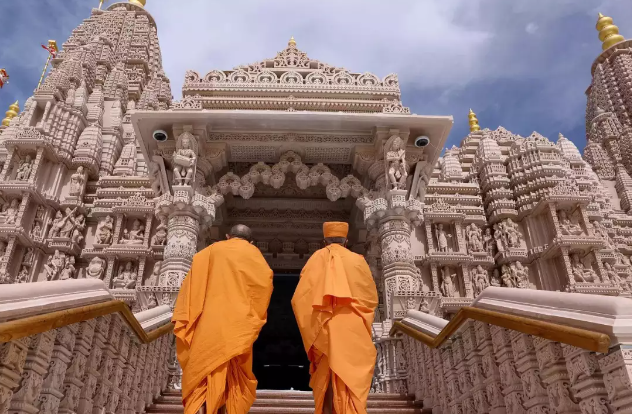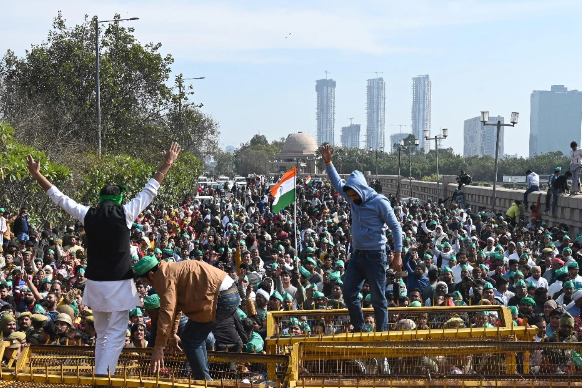
Farmers protest 2.0, Exploring the Evolution of the ‘Delhi Chalo’ Movement
Farmers Protest 2.0 ; Unveiling the Dynamics of ‘Delhi Chalo’ March
Today, the streets resonate with the resolute footsteps of farmers from Punjab, Haryana, and Uttar Pradesh, as over 200 farmer unions converge in a show of collective strength for the ‘Delhi Chalo’ protest. Unlike in 2020, when farmers surged towards the national capital with fervor, this time, stringent measures have been implemented to thwart their entry into Delhi.
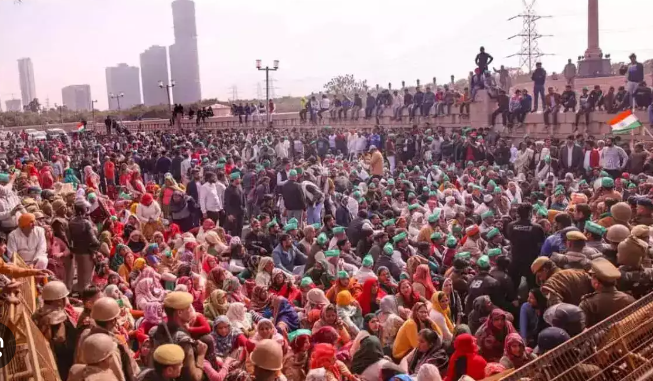
Amidst the deadlock following inconclusive talks between farmer leaders and Union ministers, Union minister Arjun Munda highlighted the government’s efforts to address farmers’ concerns, proposing the formation of a committee to resolve outstanding issues. However, farmer leaders remain steadfast in their demand for a legal guarantee of the minimum support price (MSP), citing ambiguity in the government’s stance.
The scheduled commencement of the ‘Delhi Chalo’ march at 10 am marks a pivotal moment in the ongoing agitation, yet the Haryana government’s extensive fencing along the state borders aims to impede protesters from crossing over from Punjab. Similarly, Delhi’s borders have been fortified, reflecting authorities’ determination to prevent a recurrence of the prolonged protests witnessed in 2020-2021.
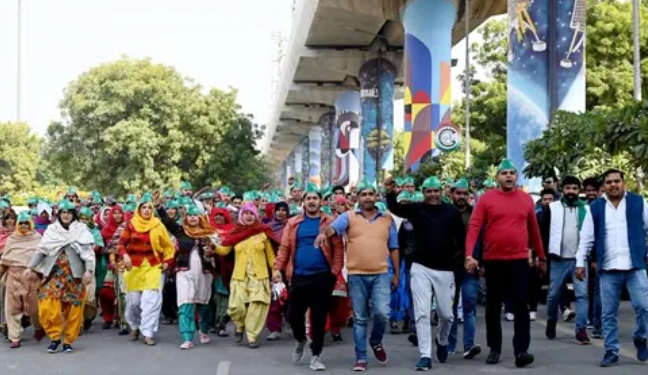
Distinctions between the current ‘Farmers’ Protest 2.0′ and its predecessor are evident across several dimensions:
1. Purpose of Protest: In 2020, farmers rallied against the contentious farm laws, which were eventually repealed in 2021 after a year-long standoff. Contrastingly, the ‘Delhi Chalo’ march of 2024 seeks legal assurances for MSP across all crops, implementation of the Swaminathan Commission’s recommendations, debt waivers, pensions for farmers and laborers, and withdrawal of cases stemming from the previous protest.
2. Leadership Dynamics: The leadership landscape has undergone significant changes since 2020, with various unions now spearheading the protest. While the Samyukt Kisan Morcha (Non-Political) and Kisan Mazdoor Morcha lead the current agitation, factionalism within unions like the Bhartiya Kisan Union and Samyukt Kisan Morcha, which played pivotal roles in 2020, is notable.

3. Shift in Leadership: Prominent leaders from the previous protest, such as Rakesh Tikait and Gurnam Singh Charuni, have receded from the forefront. Instead, leaders like Jagjit Singh Dallewal and Sarwan Singh Pandher are now leading the charge.
4. Enhanced Security Measures: Unlike 2020, when farmers managed to breach barriers and reach Delhi, authorities have preemptively fortified routes this time. Barbed wire, cement barricades, and road obstacles deter farmers’ progress, with Section 144 imposed in Delhi and Haryana sealing its borders with Punjab.
5. Government Response: Notably, the government initiated negotiations ahead of the ‘Delhi Chalo’ march, contrasting with the reactive approach during the previous protest. While concessions were made regarding the withdrawal of cases from the prior agitation, the absence of a legal MSP guarantee remains a point of contention.
In essence, the ‘Farmers’ Protest 2.0′ signifies a renewed assertion of farmers’ rights and demands, juxtaposed against a backdrop of heightened security and governmental engagement. As farmers navigate obstacles both physical and political, their resilience and unity underscore the enduring significance of agrarian movements in shaping India’s socio-political landscape.
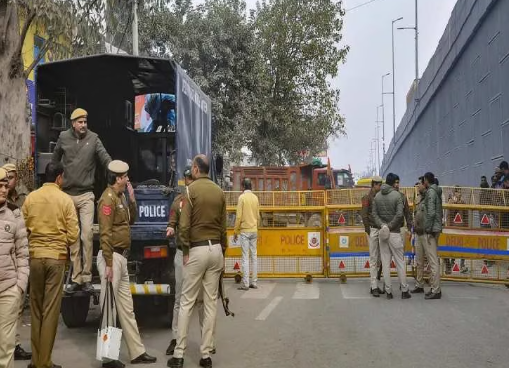
The unfolding narrative of the ‘Farmer’ Protest 2.0′ serves as a poignant reflection of the evolving dynamics between state power and grassroots activism. As farmers mobilize once again to assert their demands, the contours of resistance and resilience take on new dimensions, highlighting the enduring legacy of agrarian movements in India.
Beyond the immediate grievances surrounding MSP and agrarian reforms, the protest encapsulates broader themes of social justice, economic equity, and democratic participation. At its core, the farmers’ agitation represents a collective struggle for dignity, autonomy, and recognition—a quest for a more just and equitable society.
The leadership transition within the protest movement underscores the fluidity of power dynamics and the emergence of new voices and narratives. While established leaders may recede from the forefront, new leaders step up to carry forward the mantle of resistance, imbuing the movement with fresh energy and resolve.
The heightened security measures and preemptive crackdowns deployed by authorities reveal the underlying tensions and anxieties surrounding dissent and public mobilization. In seeking to quell protests through force and intimidation, the state unwittingly reinforces the resolve of protesters, galvanizing support and solidarity both within and beyond agrarian communities.
For the latest updates-click here.

